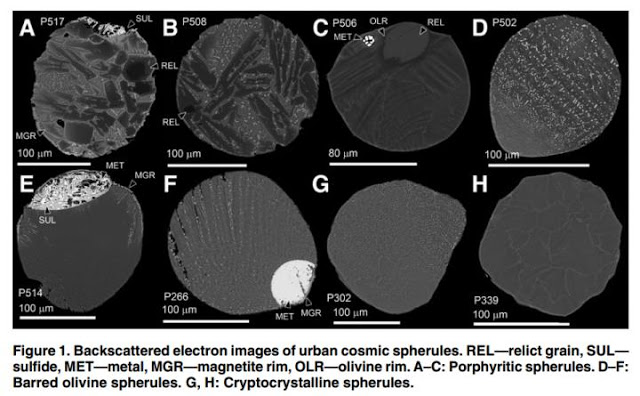

| Online: | |
| Visits: | |
| Stories: |

| Story Views | |
| Now: | |
| Last Hour: | |
| Last 24 Hours: | |
| Total: | |
100 Billion Micrometeorites Fall to Earth Each Year
This is not a new proposition. It has been a popular belief among amateur astronomers that such modern-day extraterrestrial dust can be collected on roofs in urban environments. A study from 1941 reported large numbers of magnetic spherules collected in urban areas, but Genge and colleagues cite two studies in the 1950s that asserted that such spherules are artificial.
Backscattered electron images of urban cosmic spherules.

Credit: M.J. Genge et al., Geology
Micrometeorites are thought to include materials derived from both asteroids and comets. Although some smaller dust particles survive atmospheric entry without significant heating, reports show that the majority of particles undergo melting during their passage through the atmosphere. According to Genge and colleagues, the most abundant of these, particularly at large sizes, are cosmic spherules (completely melted droplets dominated by quench textures).
In Geology, Genge and colleagues report the results of a study of 500 MMs collected among particles recovered by Project Stardust (Oslo, Norway; http://project-stardust. com) in urban areas. They show that a subset of 48 particles are cosmic spherules, representing the youngest large MMs yet recovered.
Contacts and sources:
An urban collection of modern-day large micrometeorites: Evidence for variations in the extraterrestrial dust flux through the Quaternary
M.J. Genge, J. Larsen, M. Van Ginneken, and M.D. Suttle; v, 45, p. 119-122, OPEN ACCESS
http://geology.gsapubs.org/cgi/content/abstract/45/2/119
Source:


